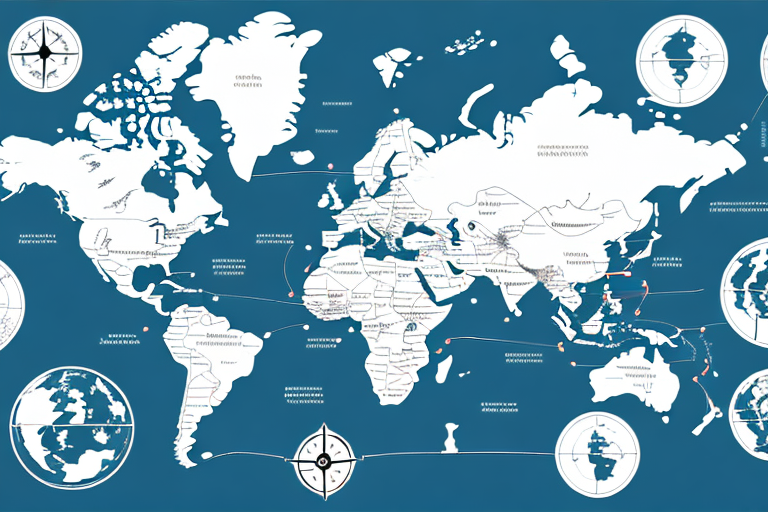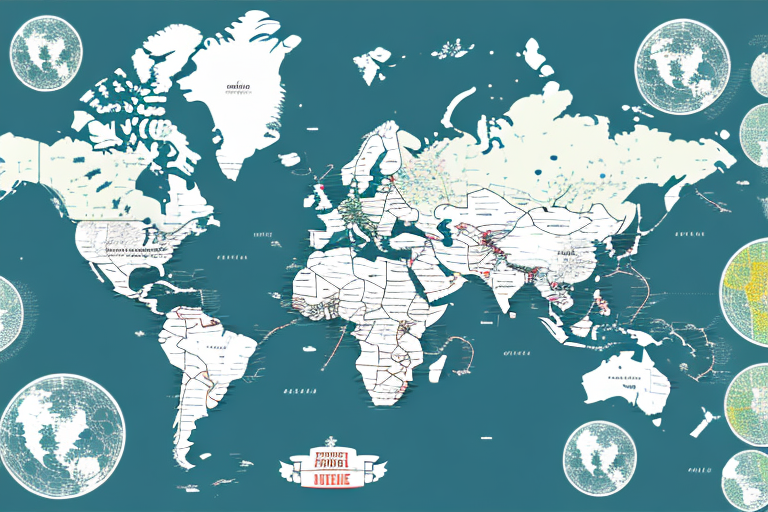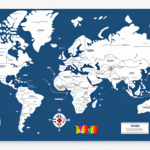Optimize Your Shipping Strategy with the FedEx Shipping Zone Map
Efficient shipping is vital for online retailers, influencing both costs and delivery times. The FedEx Shipping Zone Map is an essential tool that helps businesses identify their delivery zones, calculate shipping costs accurately, and enhance overall logistics efficiency.
Understanding the FedEx Shipping Zone Map
The FedEx Shipping Zone Map segments the continental United States into various zones, each represented by distinct colors from red to gray. These zones determine the shipping rates and transit times based on the distance between the origin and destination.
FedEx updates the Shipping Zone Map annually to reflect changes in logistics and infrastructure, ensuring businesses have the most accurate information for their shipping needs. Additionally, the map provides details on delivery options such as Saturday delivery and residential address deliveries, which may incur extra fees.
For the most current version of the map, visit the official FedEx Shipping Zones.
How to Use the FedEx Shipping Zone Map
Step-by-Step Guide
- Locate your origin and destination ZIP codes.
- Access the FedEx Shipping Zone Map through the FedEx website.
- Identify the zones corresponding to your ZIP codes by matching the colors on the map.
- Use the identified zones to estimate shipping costs and transit times using the FedEx shipping calculator.
For international shipments, refer to the FedEx International Zone Map.
Factors Determining Your Delivery Zone
Distance Between Origin and Destination
The primary factor is the geographical distance. Closer zones result in lower shipping costs and shorter transit times, while longer distances increase both.
Package Characteristics
Items that are oversized, heavy, or classified as hazardous materials may fall into different zones, affecting handling and shipping costs.
Delivery Options
Options like express delivery or added services such as signature confirmation can influence the delivery zone classification and associated costs.
Importance of Knowing Your Delivery Zone
Cost Efficiency
Understanding your delivery zone helps in accurately estimating shipping expenses, allowing for better budgeting and pricing strategies.
Enhanced Customer Satisfaction
Accurate delivery timelines contribute to customer satisfaction by ensuring packages arrive on time.
Optimized Shipping Operations
Strategic planning based on delivery zones can streamline shipping processes, reduce delays, and minimize costs.
Tips for Efficient Shipping Using the FedEx Zone Map
- Consolidate Shipments: Combine multiple orders going to the same zone to reduce overall shipping costs.
- Choose Optimal Shipping Days: Avoid peak shipping days to minimize delays and take advantage of lower rates.
- Select Appropriate Delivery Options: Match the delivery service to the urgency and value of the package to optimize costs.
- Utilize FedEx Tools: Leverage FedEx’s online tools and calculators for accurate shipping estimates and tracking.
For more shipping tips, refer to FedEx Shipping Tips.
Calculating Shipping Costs with the FedEx Shipping Zone Map
To accurately calculate shipping costs:
- Determine the ZIP codes of the origin and destination.
- Identify the corresponding shipping zones using the FedEx Shipping Zone Map.
- Input package dimensions, weight, and selected delivery options into the FedEx Rate Calculator.
- Analyze the cost estimates to choose the most cost-effective shipping method.
For detailed guidance, visit the FedEx Shipping Zones Information.
Common Mistakes to Avoid When Using the FedEx Zone Map
- Ignoring Package Dimensions and Weight: Not accounting for size and weight can lead to inaccurate cost estimates.
- Selecting Incorrect Zones: Misidentifying zones can result in unexpected shipping costs and delays.
- Overlooking Destination Restrictions: Some areas may have specific shipping regulations; always verify before shipping.
- Providing Inaccurate Address Information: Ensure that the recipient’s address is correct to prevent delivery issues.
Benefits of Using the FedEx Shipping Zone Map for Your Business
Implementing the FedEx Shipping Zone Map offers several advantages:
- Cost Savings: Accurate zone identification helps in minimizing shipping expenses.
- Improved Efficiency: Streamlined shipping processes enhance overall operational efficiency.
- Enhanced Customer Experience: Reliable delivery times contribute to higher customer satisfaction and repeat business.
- Strategic Planning: Data-driven decisions based on shipping zones support better business growth strategies.
According to a Statista report, e-commerce sales worldwide are projected to grow significantly, emphasizing the importance of efficient shipping strategies.
Additional Resources
Updating Your Delivery Address with FedEx
Ensure your delivery address is current by logging into your FedEx account and selecting the “Edit” option next to your shipping address. For post-order changes, contact FedEx customer service directly.
Tracking Your Package Using the FedEx Shipping Zone Map
Monitor your package's progress by entering the tracking number on the FedEx Tracking page. The Shipping Zone Map can provide estimated delivery times based on your package's origin and destination ZIP codes.
Contacting Customer Service for Assistance
If you require help with the Shipping Zone Map or any other shipping inquiries, reach out to FedEx customer service via phone, live chat, or email. Access support through the FedEx Customer Support page.
Comparing FedEx Shipping Zones to Other Carriers
Evaluate FedEx's shipping zones against other carriers like UPS and USPS to determine the best fit for your business needs. Consider factors such as network coverage, pricing structures, and additional services offered.
For a comprehensive comparison, review shipping zone comparisons from industry experts.
Understanding Peak Season and Its Impact on Delivery Zones
During peak seasons like holidays, shipping volumes surge, potentially affecting delivery zones with increased transit times and costs. Plan ahead by leveraging the Shipping Zone Map to anticipate changes and adjust your shipping strategies accordingly.
The Future of Delivery Zones: Trends and Predictions
As eCommerce evolves, delivery zones are expected to integrate advanced technologies such as automation and AI to enhance efficiency. Predictions include more dynamic zone mapping, improved real-time tracking, and the adoption of sustainable shipping practices to meet growing consumer demands.
Stay informed about future trends by following industry reports from sources like the Forbes E-Commerce section.
In summary, the FedEx Shipping Zone Map is a pivotal tool for businesses aiming to optimize their shipping processes, reduce costs, and improve customer satisfaction. By leveraging this resource effectively, you can enhance your logistical operations and support your business's growth in the competitive eCommerce landscape.






















